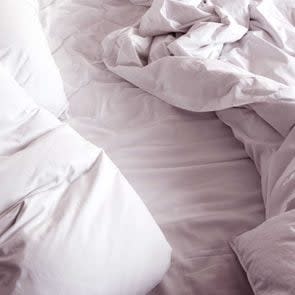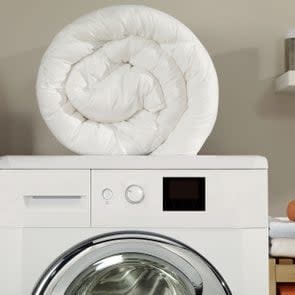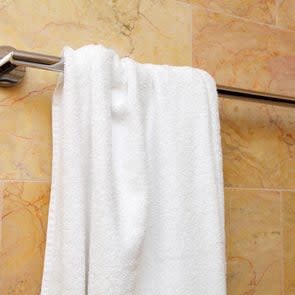How to Wash Pillows the Right Way
You wash your clothes after each wear and even mange to toss your sheets in the machine every week. But your pillows? They haven’t seen the inside of a washing machine since…ever? Knowing how to wash pillows the right way, and doing it regularly, is not something you should skip out on.
Not only do pillows collect dust, but they collect bacteria as well, says Michael Silva-Nash, executive vice president of Molly Maid of Arkansas. Washing your pillows rids them of unwanted sweat, oils, bacteria, and dust mites, gives them a fresh look and smell, and helps them last longer too.
You might already know how to wash a down comforter, towels, and silk clothing and sheets at home, but cleaning pillows properly requires a different approach. Luckily, these step-by-step instructions simplify the process. Just follow them to learn how to wash pillows the right way.
Can I machine-wash pillows?
In general, most types of pillows are machine washable and can be washed on a cool, gentle setting with mild detergent. This goes for those filled with cotton, polyester, down, and feathers. The exception: foam-filled pillows can not be machine washed (see below for specific instructions)
That said, it’s always important to first check your pillow’s label to see if there are any specific cleaning instructions recommended. Pay special attention to the laundry symbols on the label.
How to wash pillows:
Machine wash most types of pillows using a cool, gentle cycle and mild detergent.
Vacuum and spot clean foam pillows by hand.
Can you put pillows in the dryer?
Unless your pillow is made of foam, most pillows can be placed in the dryer on a low-heat setting. However, make sure to read the label on your pillow to check the specific instructions before throwing it in the machine.
How to dry pillows:
Gently tumble dry most types of pillows using the air or low-heat setting.
Allow foam pillows to air-dry completely.
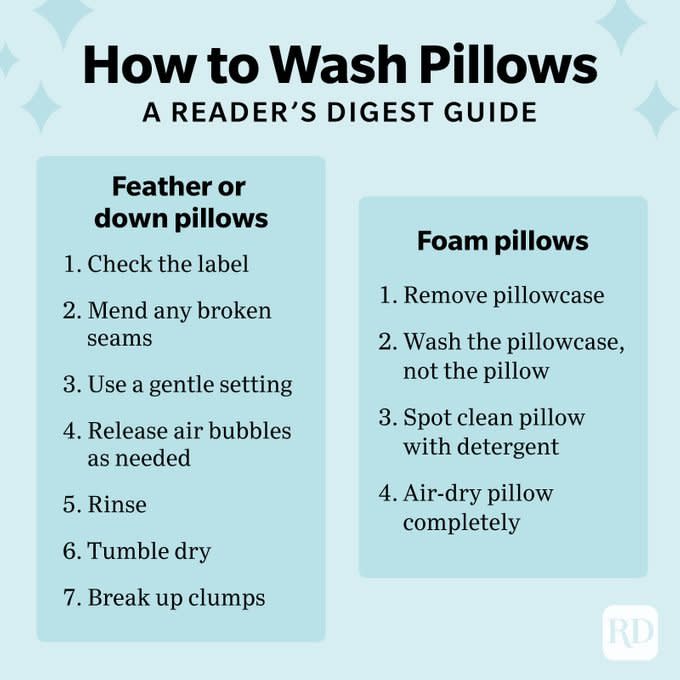
How to wash feather or down pillows
Laura Goodman, a senior scientist for Procter & Gamble Fabric Care, recommends the following steps to clean feather or down pillows:
Step 1. Check the label
Scan your pillow labels to ensure they can go in the washing machine. While most non-foam pillows can be tossed in the wash, that’s not the case 100 percent of the time. It’s crucial to not make assumptions about your specific pillow, says Tom Harari, CEO and co-founder of Cleanly, an on-demand laundry and dry cleaning service.
Step 2. Check the pillow seams
Mend any weak ones that might break in the wash.
Step 3. Use a gentle setting
Throw the pillow in the wash, add a mild detergent, and opt for a cool, gentle, or delicate wash and spin cycle. Toss in some same-colored towels, too, for extra padding. Or, if your machine is big enough, wash two pillows at a time. According to Silva-Nash, this helps keep the washing machine balanced and makes damage less likely.
Step 4. Release air bubbles as needed
If you have a top-loading washer, pause it occasionally during the washing cycle to press air from the pillows.
Step 5. Rinse
Step 6. Tumble dry
When it comes to pillows, dryer settings matter. Gently tumble dry on low or on an air-dry setting for a few hours or until the pillow is completely dry. Add in some clean, dry towels to absorb moisture and speed the drying process.
Step 7. Break up clumps
Add a few dryer balls or tennis balls to help break any clumps in the feather or down filling and keep them fluffy.
How to wash foam pillows
Step away from the washer and dryer! If you have foam pillows, Silva-Nash says you should simply dust them using a vacuum hose and spot clean them with a damp cloth. While most pillows are durable enough to withstand machine washing and drying, foam pillows can be torn apart from the motions of the washer and dryer. Not only that, but machine drying your foam pillow can greatly reduce its lifespan.
Here is a breakdown of how to hand-wash your foam pillow:
Step 1. Remove and wash the pillowcase—not the pillow
While most pillowcases can be washed in a machine, be sure to check the label just in case. Certain types, like silk pillowcases, have special care instructions. If your pillow has a protective inner cover, remove it carefully and hand-wash it with a mild detergent.
Step 2. Spot clean the pillow
Dampen a clean cloth with water and a light amount of detergent. Lightly rub the area that needs to be cleaned, making sure to press into the foam gently to penetrate the stain. You can also use a handheld vacuum to pull off any lint or hairs.
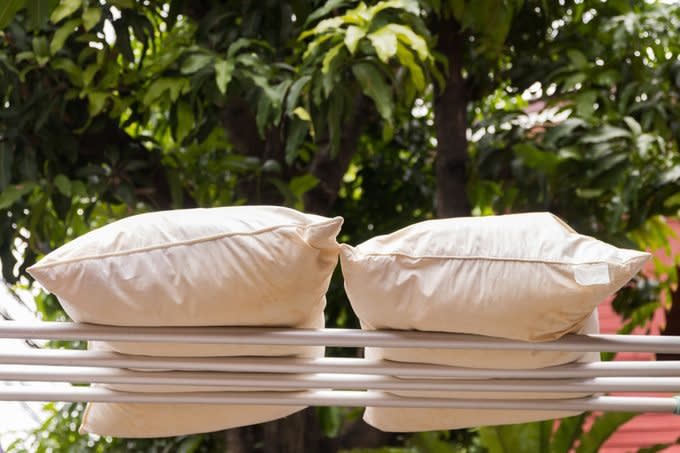
Step 3. Air-dry the pillow completely
It is imperative that you do not dry foam pillows in the dryer. Doing so could cause serious damage to your pillow. Instead, firmly press a dry towel to the treated area until it is as dry as possible. Then let the pillow sit in an uncovered and well-ventilated area until it’s completely dry to prevent mold from forming.
The best washer for pillows
“If you have access to one, it’s best to use a front-loading washing machine since pillows may float in a top-loading washing machine, and this can cause them to have dry patches and not be washed as well in certain spots,” Goodman says.
If you have a top-loading washer, consider visiting a laundromat on pillow-cleaning days so you can use the front-loading machines there.
How often should you wash your pillows?
Some experts say you should wash pillows two to three times a year, but the frequency depends on the person and how often they clean their pillowcases, according to Harari. Mark your calendar to wash your pillows every three to six months to keep up with your cleaning schedule, but make sure you’re washing your bed sheets more often than that.
When should you replace your pillows?
“How to wash pillows” may not always be the question you need to ask yourself. There comes a time when it’s smarter to find the best pillow for your sleep position and buy a new one. Silva-Nash recommends replacing pillows after a quick test: Fold the pillow in half. If it doesn’t bounce back to its original, flat shape, it’s time to replace it.
Goodman adds that when pillows lose their shape and fluffing doesn’t help, it’s time to get new ones. “You should also replace them if any odor of mold or mildew is detected,” she says. In fact, your pillow is one of the things you need to replace more often than you have been.
Additional reporting by Emily DiNuzzo.
Sources:
Michael Silva-Nash, executive vice president of Molly Maid of Arkansas
Tom Harari, CEO and co-founder of Cleanly
Laura Goodman, senior scientist with Procter & Gamble Fabric Care
How Often to Wash Your Sheets
How to Wash a Down Comforter
How to Wash Your Bath Towels
The post How to Wash Pillows the Right Way appeared first on Reader's Digest.
